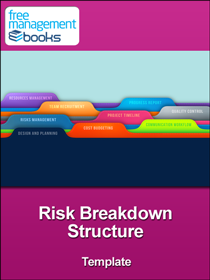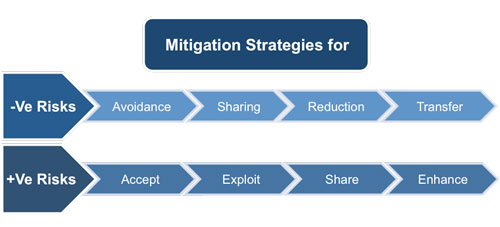
Risk Breakdown Structure (RBS) Template
This template enables you to create a hierarchical list of all the risks that affect your project. The purpose of the Risk Breakdown Structure (RBS) is to make sure that all project risks are decomposed into manageable chunks.
It allows you to assign a unique ID to each risk and its associated category as well as indicate the type of strategy that will be adopted to mitigate its impact on the project and its objective. There are various ways the RBS can be represented for example as a table, flow or hierarchical chart. The additional appendices contain a version history, glossary of project terms and a document reference.
An essential element of any successful project is the ability to identify potential risks and assign the best strategy to mitigate its likely impact on the project. This can be achieved by breaking down each risk into actionable chunks and create a risk breakdown structure (RBS). This document will be updated throughout the life of the project as issues and changes occur.
The process is very similar to that performed the work breakdown structure (WBS) as it creates a hierarchical list of risks the project may or will face. Each risk is decomposed into various categories until it reaches its lowest level. At this level an action or strategy can be defined to mitigate its impact on the project.
Risk Breakdown Structure Inputs
This is an important document that will be used in conjunction with other key project documents’ throughout the lifespan of the project such as risk register, assumptions log, issue log, risk analysis, change request register and risk log as well as its own management plan and those of the other individual project plans.
The RBS also plays a critical role is setting stakeholder expectations as it describes what risks the project faces. This includes details on the likely impact they will have on the project if they occur and the probability of that happening. It identifies any dependency between risks and enables root cause analysis to be performed so that plans can be put in place to mitigate such risks.

The project manager following extensive input from the project team, subject experts and appropriate stakeholders will produce the RBS. He or she will also use the approved project management plan as well as taking into account the guidelines and culture of the organization. A significant aspect of this preparation of the RBS will include looking at the procedures, processes and policies that the project will be expected to work within.
Having identified the risks it is now necessary to categorize them. For the simpler projects two categories, external and internal risks (often referred to as project related) will be assigned to the identified risks, For the more complex project categories will be defined by the nature of the project itself. Four popular categories are project management, technical, organizational and external.
Risk Categories for RBS
Many organizations will have their own checklists to aid project mangers identify potential risks to their project as well as the documented feedback from historic projects. These checklists often use various levels of categories subdividing the main ones as shown in the diagram above. For examples the list below shows typical divisions of the four main categories of the more complex projects.
• Project Management (Budgeting, Scheduling, Resources, Cost Estimates, Procurement)
• Technical (Technology, Track Record)
• Organizational (People, Processes & Procedures, Funding)
• External (Environment, Market)
The diagram below shows one way to represent the RBS so that it aids decision-making. It can also be shown in a tables or flow chart.

Risk Categorization in RBS
The use of main and sub categories or levels enables a project manager to prioritize the identified risks’ and make objectively plans to mitigate each risk. Categorization also shows up any interdependencies between levels and areas. The RBS is another essential tool a project manger can use to monitor risks during the project’s life.
Once the main categories have been defined each one can then be broken down into a series of sub-levels until the risk is manageable. The complexity any RBS depends on the nature of the individual project the industry sector it will operate in and the culture of the organization. The main purpose of the RBS checklist is to provide a framework that any project can use to base its initial risk identification on.
Project risks can either be negative or positive (an opportunity) and it is important that each one is addressed and planned for in the risk management plan. It is the role of the project manager to minimize and where possible eliminate negative risks and at the same time do all he or she can to increase the likelihood of an opportunity becoming a reality. There are four strategies shown in the diagram below that enable a project manger to manage the negative and positive their project encounters throughout its lifespan.
Risk Mitigation Strategies
The RBS can also be used as part of the procurement decision-making process as it enables objective comparisons to be made of different suppliers responses to an individual tender. This document also plays a role in explaining the importance of funding this project as opposed to others competing for the same money.

An RBS can help to demonstrate the potential risks of a project and how this information feeds into an EVM analysis as part of a decision tree analysis that enables an organization achieve its goal. Successful project managers are constantly monitoring and evaluating the risks their project faces throughout its duration. They make sure that they receive all the necessary reports they need to track and control such risks.
